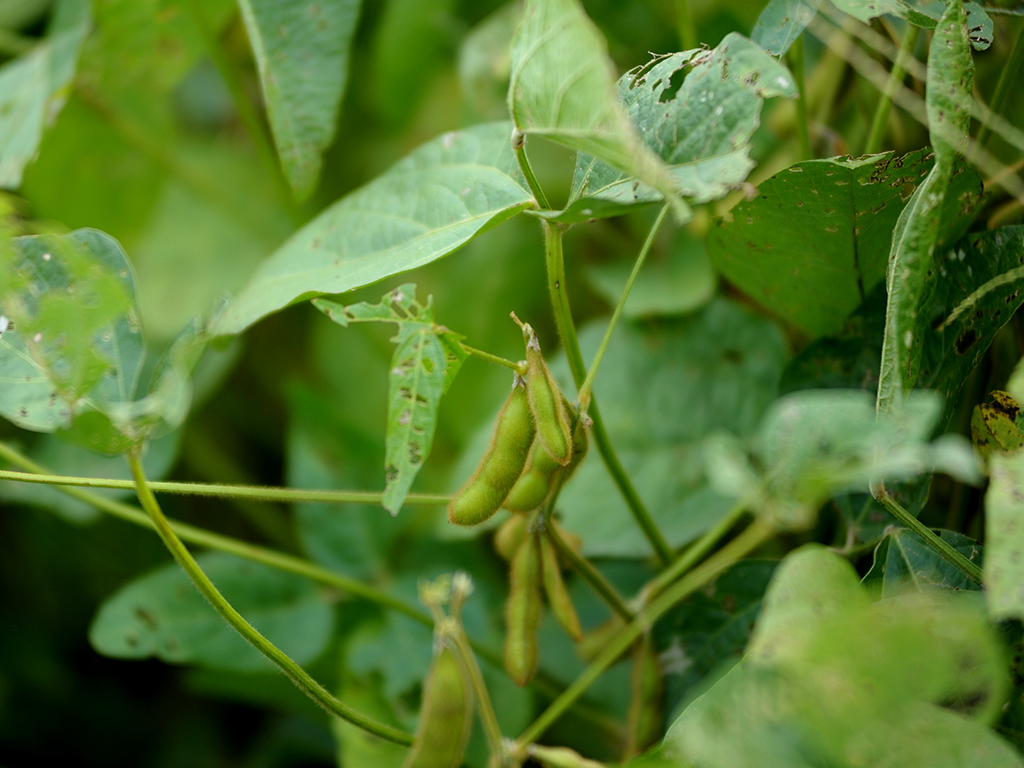
Soybean producers could face uncertain markets if a proposed tariff by China is finalized. China has threatened a 25% import tax on U.S. soybeans. | Download this photo.
Chinese tariff threats add uncertainty to U.S. soybean market
K-State economist says the two nations need each other
April 6, 2018
MANHATTAN, Kan. — On the heels of China’s announcement of a possible tariff on United States pork exports to that country, China on Wednesday announced a second tariff target, one that could carry a bigger impact for Kansas producers: soybeans.
“This is the last big ag card to lay on the table in these negotiations,” said Dan O’Brien, K-State Research and Extension grain market economist, speaking with Eric Atkinson on Friday’s “Agriculture Today” radio program.
“And it’s important to realize that this is an announcement of what would happen if current negotiations – forecast to end in May – don't conclude with some type of agreeable compromise for both parties.”
This is the latest worry for ag producers; earlier this week, China announced a planned tariff on U.S. pork, which has hog farmers worried about a potential surplus.
A tariff would essentially increase the price of U.S. soybeans coming into Chinese ports. If the price of soybeans on the world market is $10, a 25 percent tariff would raise that cost to $12.50.
“So what does that do? It puts the U.S. at a price disadvantage for Chinese companies that are seeking to buy soybeans,” O’Brien said.
O’Brien estimates that China uses about 111 million metric tons of soybeans each year, and of that number, China imports about 97 million metric tons from other countries. O’Brien said that without American soybeans, China could come up short.
“We’re in the 2017–2018 marketing year, all of South America is forecast to produce about 85 million metric tons of soybeans. So even if China took all of South America’s soybean exports, they’d still be short.”
China may be the biggest buyer of soybeans in the world, but it is not the only buyer. O’Brien said China buys a little more than 60 percent of the available exports. American soybeans abandoned by China could look like a good deal to other nations.
“Suddenly you've got China with all its attention on South America – mainly at Brazil because Argentina doesn’t have that much – and the other buyers in the world think ‘Gosh, those are pretty high prices, but we're not paying a tariff. We'll come back the United States.’ So you're shifting that the flow of business around.”
While most hog farmers can’t roll out of bed tomorrow morning and say, “Pork prices are looking bad — I think I’ll raise beef cattle this year,” grain farmers do have a bit of flexibility. And with spring planting only weeks or even days away, O’Brien thinks the looming soybean tariff might have some producers mulling their options.
“Farmers in Kansas, as well as the rest of the Corn Belt, are thinking this over,” he said. “Currently, there’s a price advantage with soybeans – all else being equal, farmers make a bit more money planting soybeans, compared to corn. When the tariff was announced, there was a modest decrease in that advantage,” O’Brien said.
“The thing we look at is, how much seed has been bought? If the numbers change and they start looking to leave soybean prices at a disadvantage, producers that have already bought soybean seed could scramble to return that seed and buy new seed of some other crop – corn, grain sorghum, sunflower or something else.”
O’Brien stresses that nothing has been finalized – yet.
“Again, what we're thinking about is what could happen. If we get to the end of May and the tariffs stick and we haven't come up with a solution, then it's probably time to reevaluate all those decisions.”

